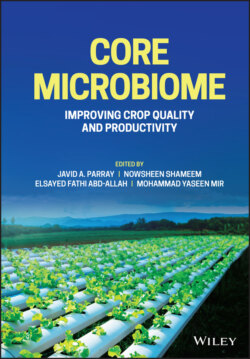Читать книгу Core Microbiome - Группа авторов - Страница 48
3.5 Plant Root Exudates and the Recruitment of Beneficial Microbes
ОглавлениеRoot exudates serve as indicators that start the symbiotic relation between arbuscular mycorrhizal fungi and rhizobia. Root exudates contain ions such as oxygen, water, an inorganic acid, and (H+) but mainly consist of carbon compounds (Bais et al. 2004). Lower-weight organic compounds (amino acid, organic acid, phenols, sugars, secondary metabolites) and high-weight organic compounds (proteins, polysaccharides) are present in the soil (Badri et al. 2009). Microorganisms established a sensory system called chemotaxis, which guides these components secreted from roots to deliver essential nutrition and energy for survival under stressful conditions. Moreover, Gao et al. (2011) observed that plants might enhance the degradation by the exudation of enzymes, such as phenol oxidase, laccase, and peroxidase through the root. As a result, the oxidation of various hydrocarbons degrades them into intermediate products. The combined application of arbuscular mycorrhizal fungi and septate endophyte was studied in 36 medicinal plant species. The level of abundance of arbuscular mycorrhizal fungi in the roots varied from 2.5% (Helianthus tuberosus) to 77.9% (Convallaria majalis) (Zubek and Błaszkowski 2009).
